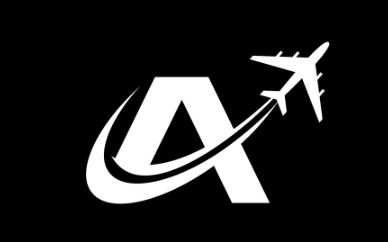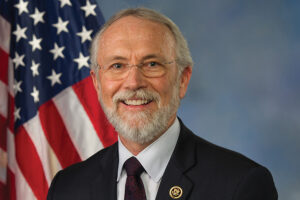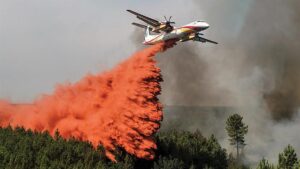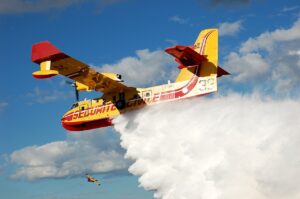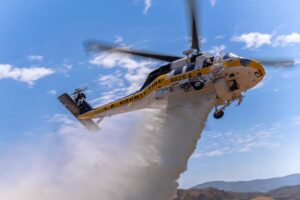
By: George Turnboo
From the shores of Hawaii to the forests of Canada, this summer has provided a sobering reminder of the fury of wildfires. My home of El Dorado County knows this all too well after the Caldor Fire burned 221,835 acres in 2021. The Caldor Fire was the 15th largest and 16th most destructive in California history. Saving lives and property requires us to think of firefighting as a military exercise — attacking flames on the ground and from the sky — so it’s appropriate that our latest tool has been used for military transport for decades.
Thanks to the collaborative effort of lawmakers from across the political aisle, California soon should have seven C-130 U.S. Coast Guard aircraft, greatly enhancing our ability to drop water and other fire retardants on the largest and most dangerous fires. Credit goes to the early initiative of Sen. Dianne Feinstein, the determined leadership of Gov. Gavin Newsom, Sen. Alex Padilla, Representative Ken Calvert and Cal Fire Chief Joe Tyler, along with the rest of California’s congressional delegation.
The Senate and House versions of the National Defense Authorization Act include the transfer of seven C-130 aircraft to Cal Fire for wildfire suppression, search and rescue and emergency operations pertaining to wildfires. In a crucial moment of bipartisan unity, Sen. John Boozman of Arkansas provided invaluable support by rallying support from his Republican peers, assisting Sen. Padilla in driving the effort to fruition.
The bill now sits with the conference committee — a group of House and Senate members charged with reconciling any differences between the two versions of the bill. Vulnerable communities like mine need the transfer of these C-130s to be included in the version sent to the president’s desk.
In terms of delivering a payload of retardant, a single C-130 is equivalent to six S-2T Airtankers currently used by Cal Fire. This strategic move translates to the equivalent of 42 standard firefighting aircraft for California: a testament to our unwavering commitment to protecting our communities.
If the transfer remains in the final version of the bill, the next steps will be to retrofit and finalize the aircraft for certification by the Federal Aviation Administration. If all involved parties act with dispatch to get this across the finish line and into production, the first of the seven aircraft could be available prior to the 2024 fire season and the remainder could be ready to deploy by the beginning of the 2025 fire season. This timeline is crucial as these aircraft promise to be a game-changer in our wildfire response strategies.
This proposed legislation not only underscores the importance of cross-party collaboration but also demonstrates the profound impacts of policy on everyday lives. Putting the seven C-130 aircraft in the hands of California firefighters will save lives and livelihoods.
Lawmakers from both parties also appreciate the urgency of maintaining federal wildland firefighters’ pay, which will drop significantly Oct. 1 with the expiration of temporary differentials approved last year. The cost of the higher pay — about $60 million — is a bargain compared to the economic toll alone of destructive wildfires. Neither of these monumental wildfire prevention victories would be possible without bipartisan support and it should serve as an example of good government going forward.
The only place I’ve called home, El Dorado County, was reduced to ashes in the Caldor Fire. We know what it’s like to lose everything to a wildfire, wondering if something could have been done to stop it. We now know that if theTrestle Forest Health Project was completed on time, Grizzly Flat would never have burned. Current wildfires are a harrowing reminder that meaningless bureaucracy, regulatory burdens and the lack of responsible forest management failed us terribly.
We cannot afford to become complacent about wildfire risk. Canadian wildfires have exposed residents of the East Coast to dangerous air pollution that has become all too common in the West and now the world’s attention has turned to the catastrophic devastation in Maui. Counties like mine watch in horror, knowing all too well what those families are facing, haunted by the knowledge it could happen again. The smoke is a reminder of how crucial it is to manage forests and deploy new tactics for wildfire management. Heavy winter rains mean rich summer vegetation, which fuels more severe wildfires.
No other communities should suffer through what those in El Dorado County did in 2021 — or what Lahaina did just last month. The physical, economic and psychological scars linger for decades. While we can’t eliminate destructive wildfires, we owe it to our communities to do everything we can to reduce risks. Paying our firefighters fairly and giving them the right tools is a good start.
George Turnboo is the El Dorado County District 2 supervisor.
SOURCE: https://www.mtdemocrat.com/opinion/guest-column-unleashing-aerial-firefighting-s-heavyweights-a-bipartisan-triumph/article_474b64de-5328-11ee-b19d-7f09c64f03a9.html
